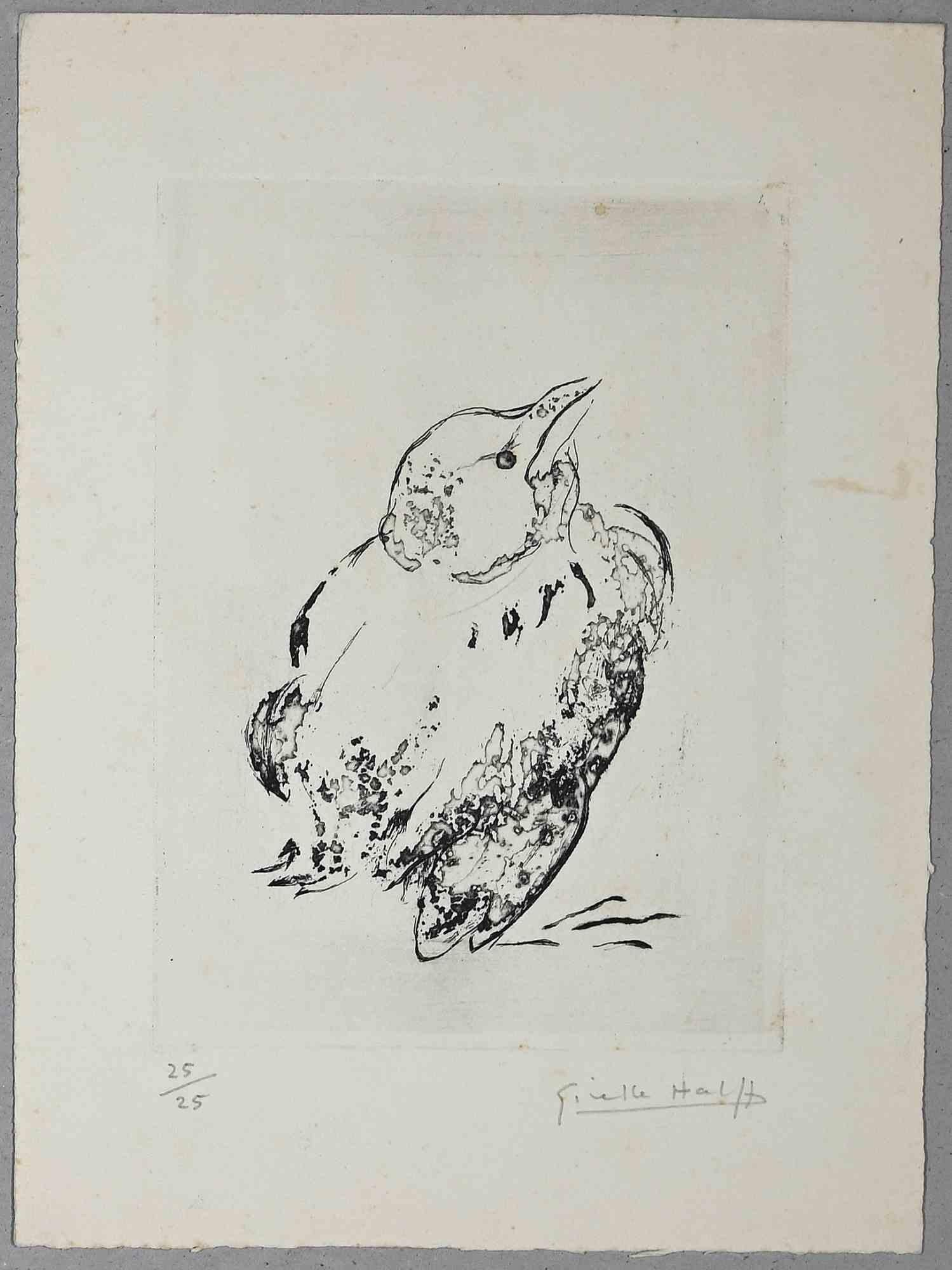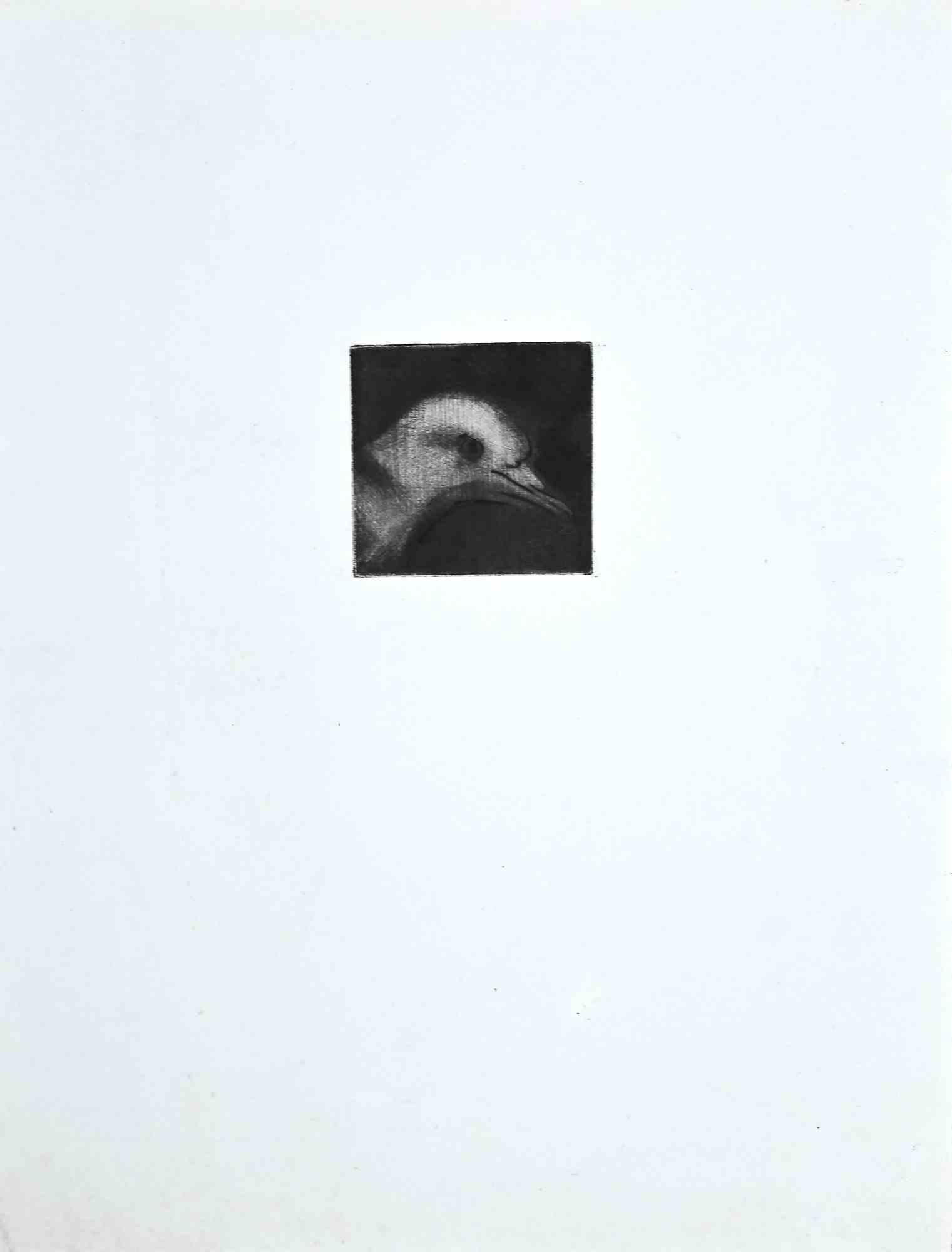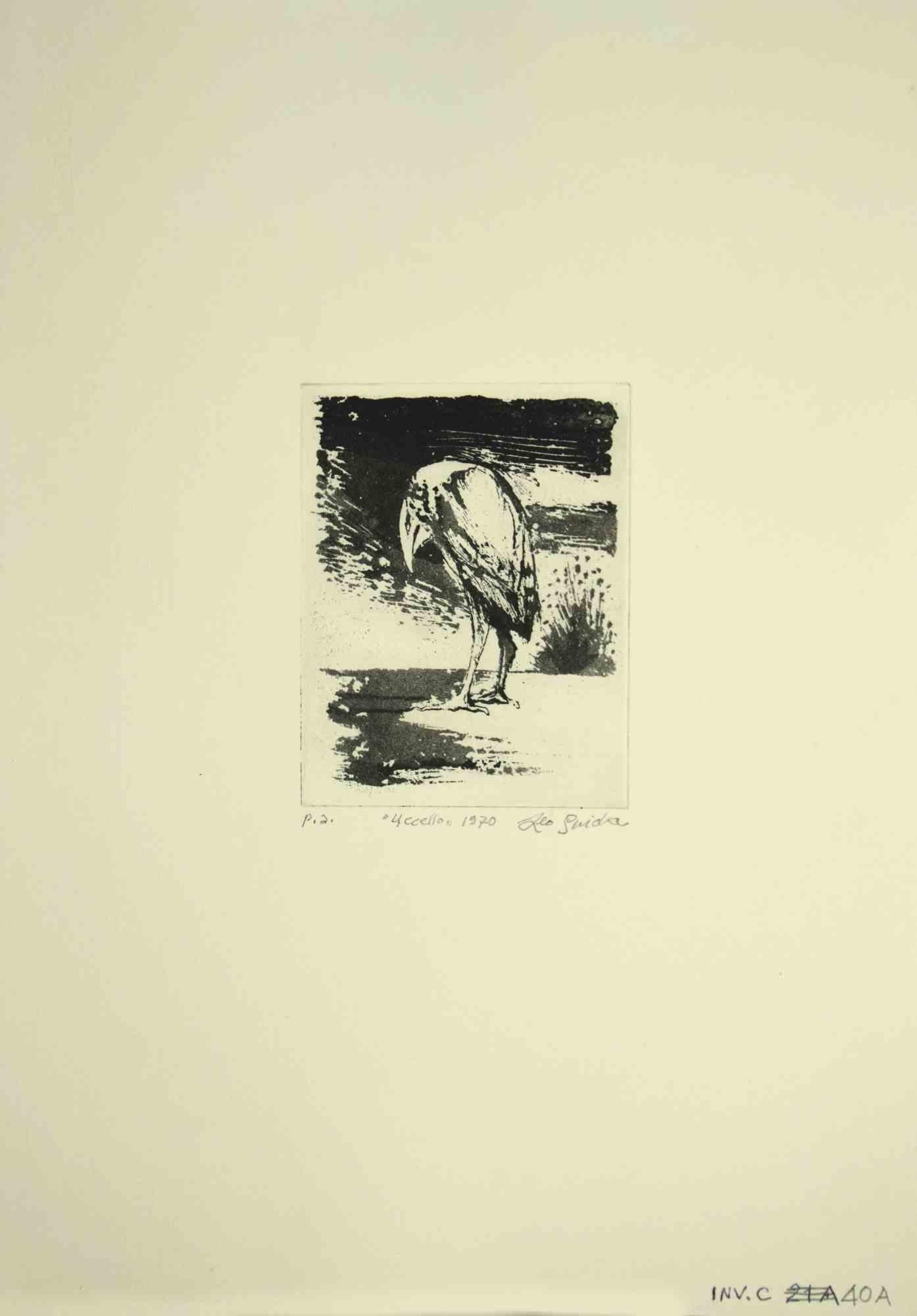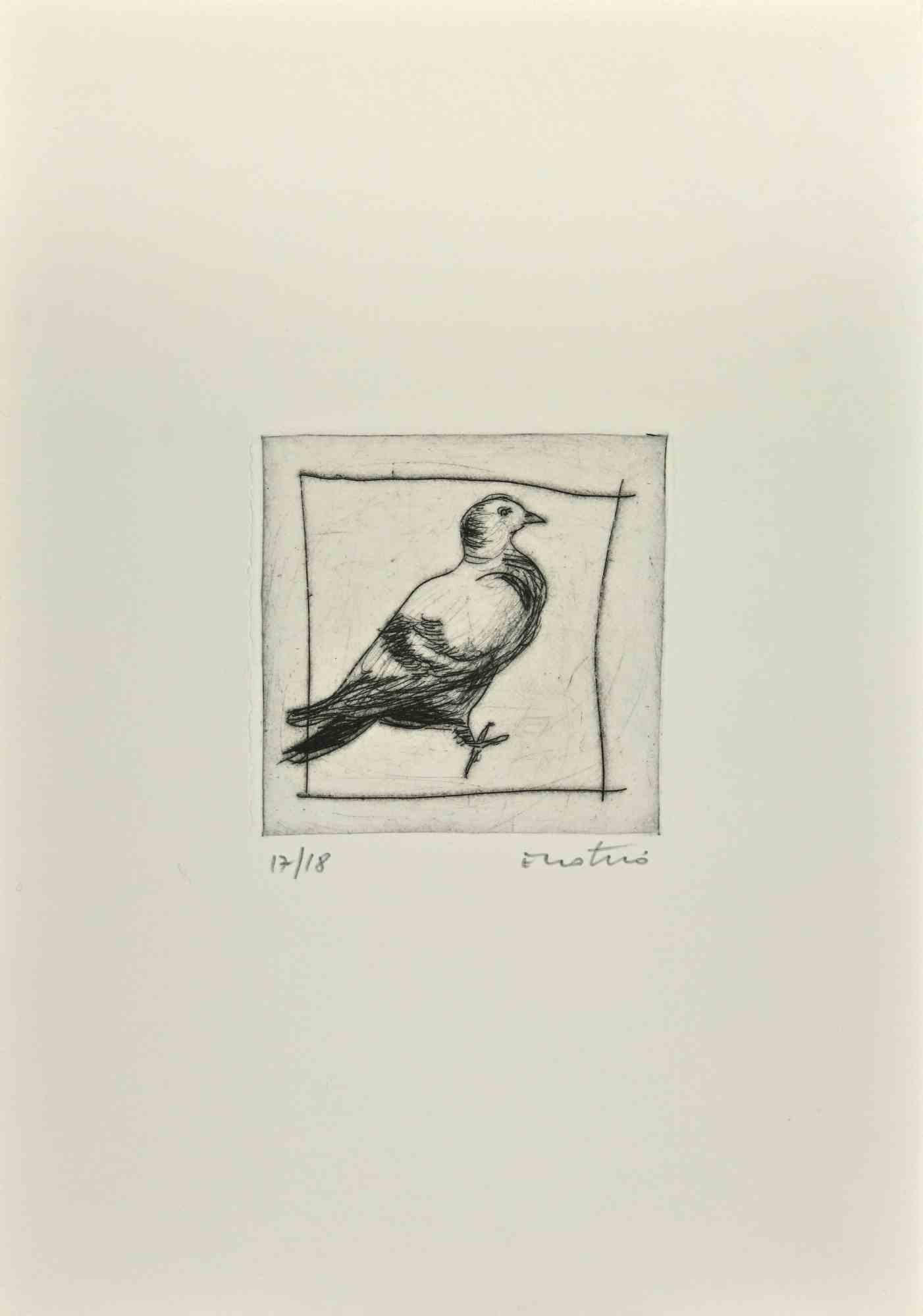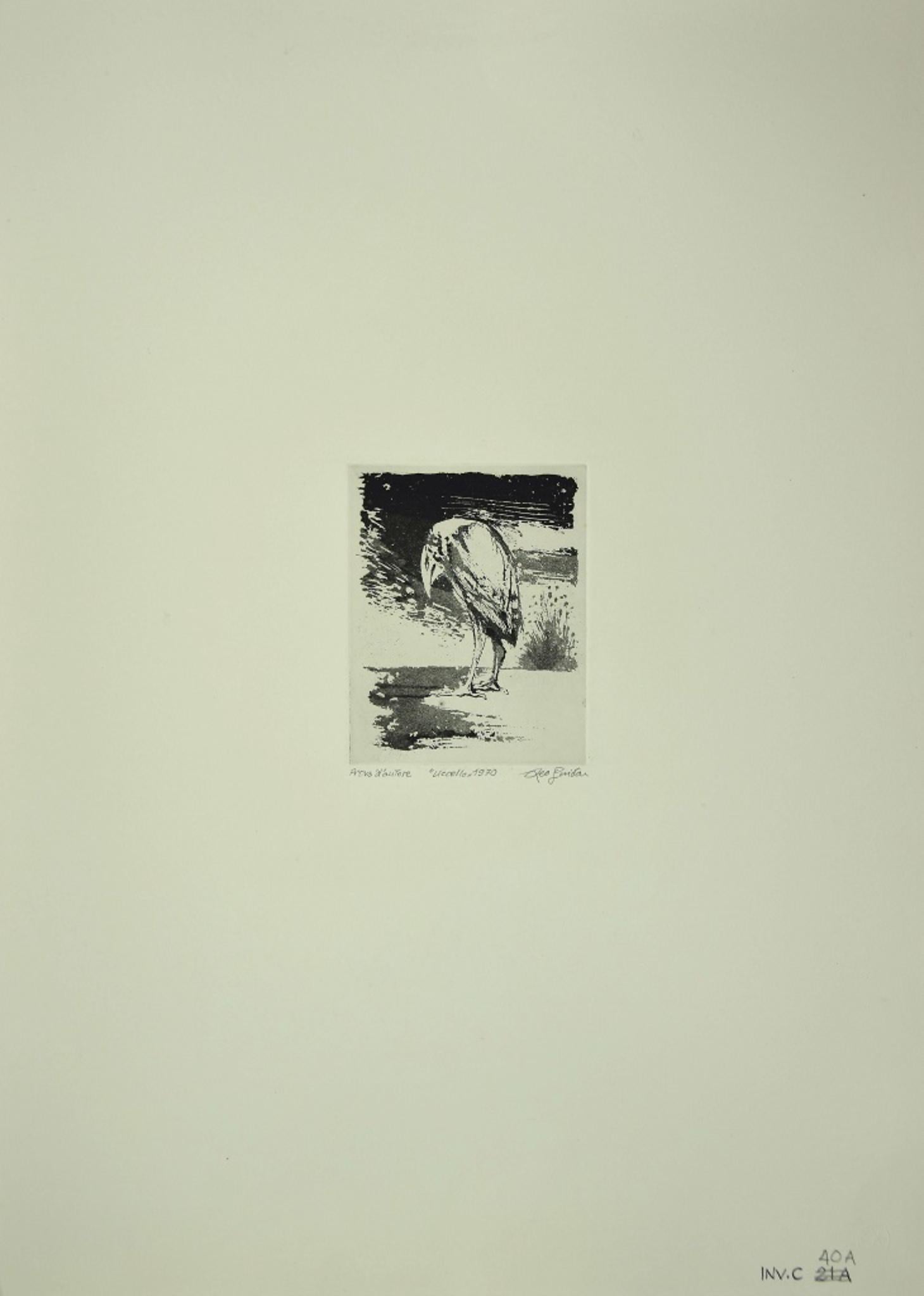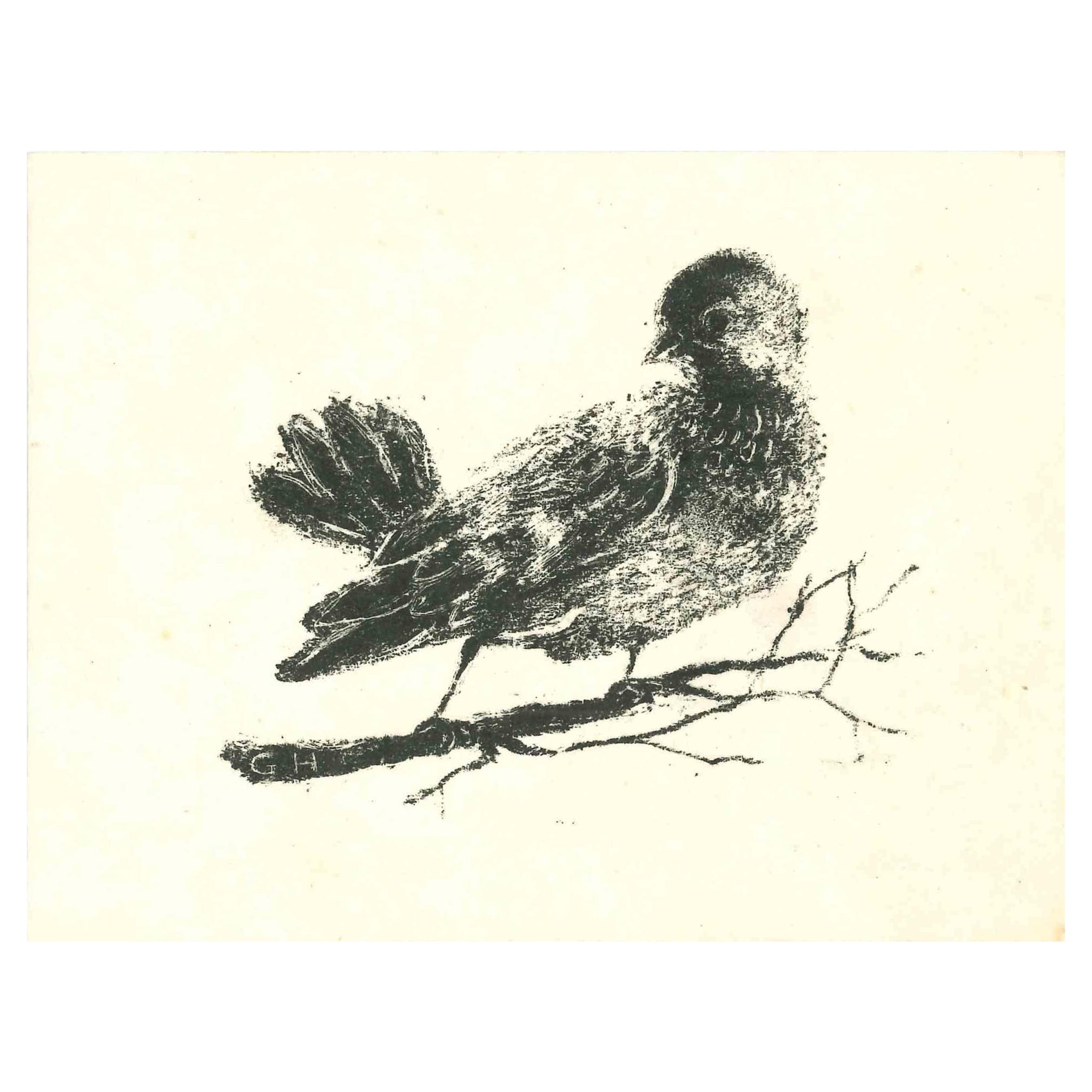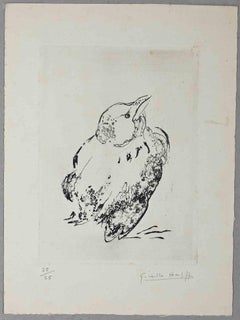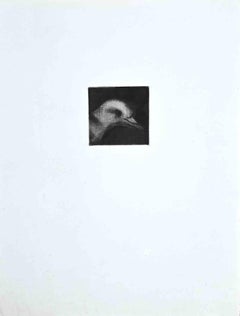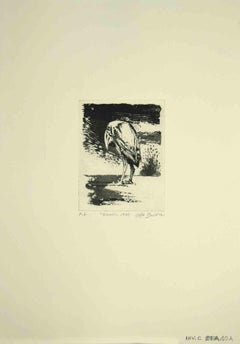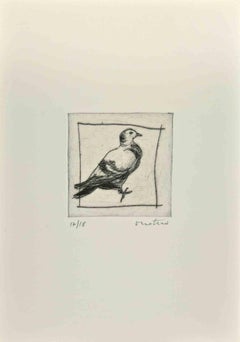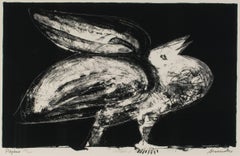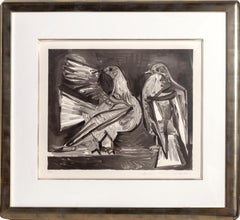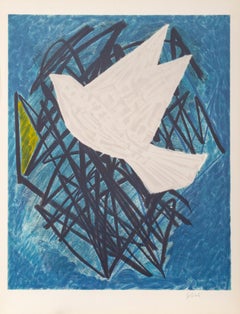Items Similar to Pigeon - Original Etching by Giselle Hallf - Mid-20th Century
Want more images or videos?
Request additional images or videos from the seller
1 of 2
Giselle HalffPigeon - Original Etching by Giselle Hallf - Mid-20th CenturyMid-20th Century
Mid-20th Century
$331.02
£252.24
€280
CA$463.69
A$504.85
CHF 264.33
MX$6,059.83
NOK 3,336.01
SEK 3,128.08
DKK 2,132.76
About the Item
Pigeon is an original etching realized by Giselle Halff in the mid-20th Century
Good condition.
Pencil signature.
Edition of 25 copies signed and dated.
- Creator:Giselle Halff (French)
- Creation Year:Mid-20th Century
- Dimensions:Height: 9.85 in (25 cm)Width: 7.49 in (19 cm)Depth: 0.08 in (2 mm)
- Medium:
- Movement & Style:
- Period:
- Framing:Framing Options Available
- Condition:Insurance may be requested by customers as additional service, contact us for more information.
- Gallery Location:Roma, IT
- Reference Number:Seller: T-1273391stDibs: LU65039256942
About the Seller
4.9
Platinum Seller
Premium sellers with a 4.7+ rating and 24-hour response times
1stDibs seller since 2017
7,798 sales on 1stDibs
Typical response time: 1 hour
- ShippingRetrieving quote...Shipping from: Monaco, Monaco
- Return Policy
More From This Seller
View AllBird - Original Etching and Aquatint by Giselle Hallf - Mid-20th Century
By Giselle Halff
Located in Roma, IT
Bird is an original etching and aquatint by Giselle Hallf in the half of the 20th Century.
Good conditions.
Numbered, Edition 25/25.
The artwork is depicted through strong strokes...
Category
Mid-20th Century Contemporary Figurative Prints
Materials
Etching, Aquatint
The Bird - Original Etching by Giselle Hallf - Mid-20th Century
By Giselle Halff
Located in Roma, IT
The Bird is an original artwork realized by Giselle Halff (1899-1971) in the mid-20th Century.
Original black and white etching on cardboard.
Good conditions. Not signed.
Category
Mid-20th Century Modern Figurative Prints
Materials
Etching
Bird - Original Etching by Leo Guida - 1970
By Leo Guida
Located in Roma, IT
Bird is an original etching realized by Leo Guida in 1970.
Good condition.
Mounted on a white cardboard passpartout (50x35).
Dated and signed by the author.
Artist proof.
Leo Gu...
Category
1970s Contemporary Animal Prints
Materials
Etching
$212 Sale Price
25% Off
Pigeon - Etching by Enotrio Pugliese - 1963
Located in Roma, IT
Pigeon is an Etching realized by Enotrio Pugliese in 1963.
Limited edition of 18 copies numbered and signed by the artist.
Good condition on a white cardboard.
Enotrio Pugliese (M...
Category
1960s Contemporary Figurative Prints
Materials
Etching
Bird - Original Etching by Leo Guida - 1970
By Leo Guida
Located in Roma, IT
Bird is an original Contemporary artwork realized in 1970 by the italian artist Leo Guida.
Original Etching on paper.
Titled, hand-signed and dated in pencil on the lower margin: ...
Category
1970s Contemporary Animal Prints
Materials
Etching, Paper
The Bird - Lithograph by Giselle Halff - 1950s
By Giselle Halff
Located in Roma, IT
The Bird is an Original lithograph on ivory-colored paper realized by Giselle Halff in 1950 ca.
Hand-signed by pencil on the rear.
Good conditions.
Category
1950s Modern Animal Prints
Materials
Woodcut
You May Also Like
"Pajaro (Parrot), " Black and White Lithograph signed by Arthur Secunda
By Arthur Secunda
Located in Milwaukee, WI
"Pajaro" is an original black and white lithograph by Arturo A. Secunda. It depicts a parrot. The artist signed the piece in the lower right and wrote the title and the edition number (27/100) in the lower left.
11 1/2" x 17 1/2" art
22 3/4" x 28 1/2" frame
Arthur Secunda is an internationally renowned artist whose career has spanned five decades. His one man shows have been seen worldwide in numerous galleries and museums in France, Sweden, Belgium, Holland, Spain, Israel, and Japan. In the United States, he is represented in most major museums of the country, including the National Gallery of Art and the Smithsonian Museum in Washington D.C., the Museum of Modern Art in New York, the UCLA Museum, the Detroit Art Institute, and the Phoenix Museum. Known for his brilliant collages and striking graphics, Secunda has mastered all types of printmaking, even making his own paper in France and Japan. His impressive body of work includes painting, mixed media, polyester assemblage, ceramics and welded sculpture. His studies began at the Detroit Art Institute as a teenager, and continued in New York at the Art Students League and New York University. After a stint in the Air Force as an artist, he then studied, thanks to the GI bill, in Mexico, Paris and Italy, with many great artists and teachers, beginning a lifelong propensity for travel-- living and working in other countries. For decades, he maintained studios in Paris and LA.
He considers himself a landscape artist, and has developed his own iconography in representing nature, the land and its forms, as well as corresponding inner landscapes. He is known for a specific kind of color gradation and blending of forms in many media. His work tends to oscillate between the serene--striated colors in landscapes--to the expressive, as in many of his oil paintings.
After years in Paris, Secunda has maintained a studio in Scottsdale for the last decade--doing what he has done in all of the other places he has liv ed and worked in the last 50 years--creating imagery.
He has worked as a jazz musician--in Paris in the early days to support himself, and as a milkman; as an art critic, lecturer, curator, writer and publisher. Periodically, he consults at NASA where he is an image visualizer, helping translate scientific data into visual images. Highly respected as a teacher, he will spend August in Lacoste, France teaching a master class in collage and the creation of handmade artists books. (Secunda has an international following of people who subscribe and collect his dada art "books".)
Next year, he will have a one man exhibition at the University of Judaism in Los Angeles, presenting a never before seen series of expressive portrait monotypes of noted art personalities, after which he will exhibit early Mexican woodcuts...
Category
1950s Animal Prints
Materials
Lithograph
Deux Pigeons, Cubist Lithograph after Pablo Picasso
By Pablo Picasso
Located in Long Island City, NY
A lithograph from the Marina Picasso Estate Collection after the Pablo Picasso painting "Deux Pigeons". The original painting was completed in 1960. In the 1970's after Picasso's de...
Category
1980s Modern Animal Prints
Materials
Lithograph
The Little Bird - Original Etching Handsigned, Ltd 75 copies
By Mordecai Moreh
Located in Paris, IDF
Mordecaï Moreh (1937-)
The Little Bird
Original handsigned etching
Numbered / 75 copies - numbered in roman numerals (the number of the etching you receive might differ from the on...
Category
Late 20th Century Modern Animal Prints
Materials
Etching
The Dove, Modern Lithograph by Emile Gilioli
By Émile Gilioli
Located in Long Island City, NY
An original hand-signed limited edition lithograph by famed sculptor Emile Gilioli. Edition of only 75. Émile Gilioli (b. Paris, 10 June 1911, d. Paris,...
Category
1960s Modern Animal Prints
Materials
Lithograph
Discours D'oiseaux #4, etching of birds by Marjan Seyedin
Located in Palm Springs, CA
One of 9 humorous portraits of birds engaged in conversation by Franco-Iranian artist Marjan Seyedin. In her works, birds and animals provide an allegorical representation for mankin...
Category
2010s Contemporary Animal Prints
Materials
Etching
A birdie - Contemporary Figurative Etching Print, Nude, Monochromatic
By Czeslaw Tumielewicz
Located in Warsaw, PL
Polish painter and graphic designer, Czeslaw Tumielewicz was born in 1942.
In 1968, he studied at the Architecture faculty of Gdank, before continuing his course at the Technical Un...
Category
2010s Contemporary Figurative Prints
Materials
Paper, Etching
More Ways To Browse
Silent Film Poster
Tim Woolcock
Timothy Barr
Tintin Poster Vintage
Tom Laser
Van Gogh Vintage Poster
Vanity Fair Prints 1890
Vasarely Folklore
Velos Antique
Vintage Bathing Beauty Art
Vintage Cunard Posters
Vintage February Images
Vintage Hockey Posters
Vintage Horse Racing Posters
Vintage Ireland Travel Posters
Vintage Mexico Travel Posters
Vintage Republican Posters
Vintage Rotter
